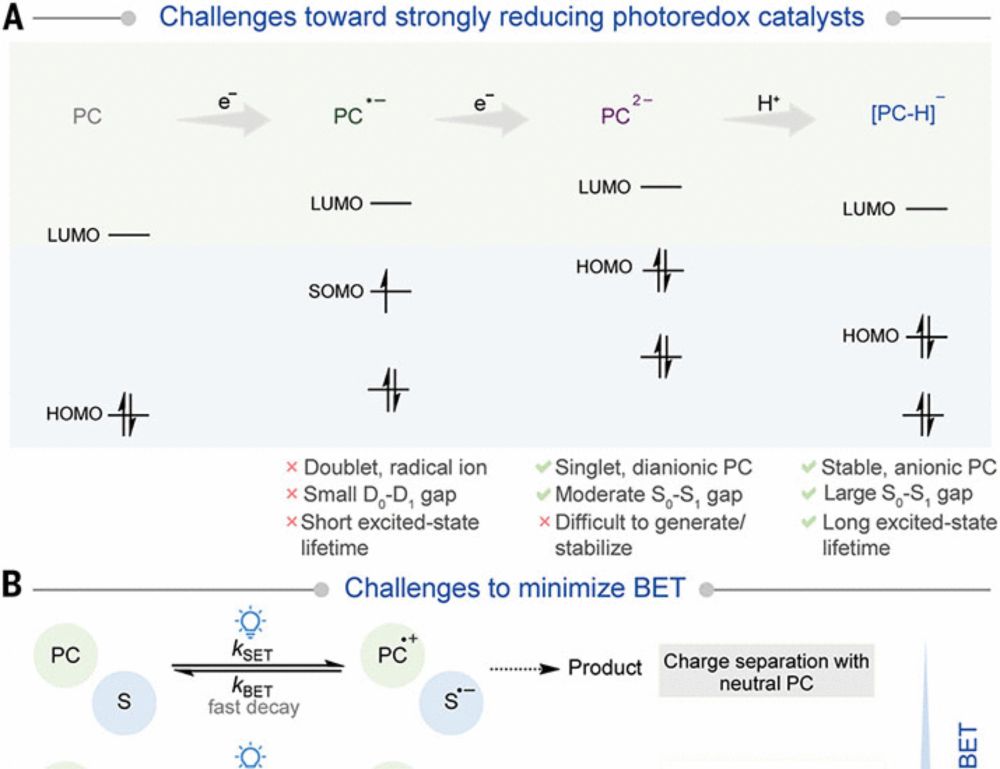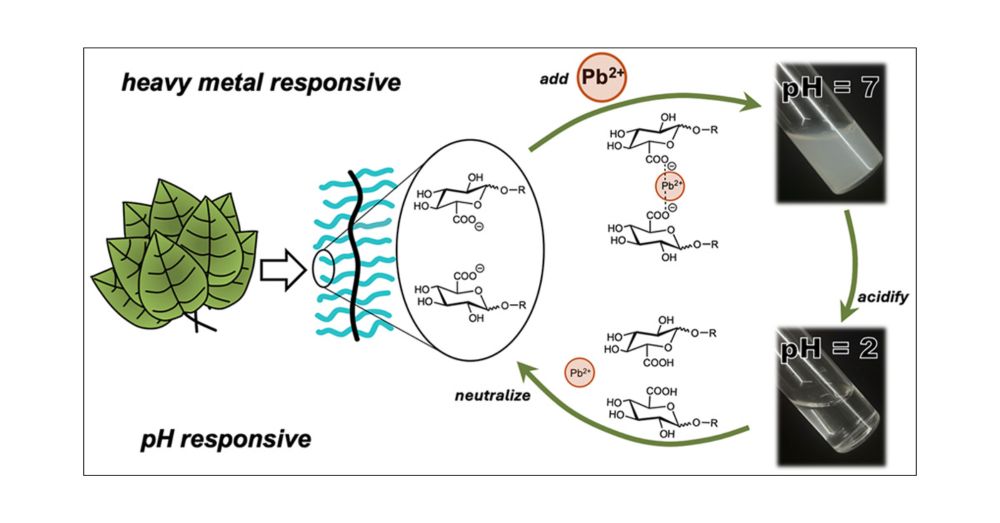Congrats Jill!!! 🎉
30.04.2025 05:16 — 👍 1 🔁 0 💬 0 📌 0
Congrats Jessica!! 👏
03.04.2025 04:09 — 👍 1 🔁 0 💬 0 📌 0
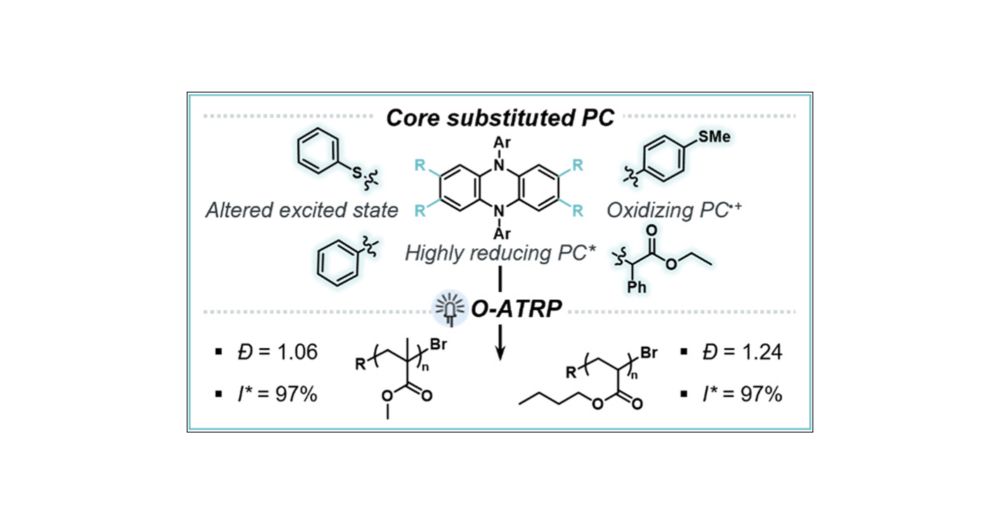
Influence of Dihydrophenazine Photoredox Catalyst Excited State Character and Reduction Potentials on Control in Organocatalyzed Atom Transfer Radical Polymerization
The development of N,N-diaryl dihydrophenazine organic photoredox catalysts (PCs) has enabled numerous examples of organocatalyzed atom transfer radical polymerization (O-ATRP) of methyl methacrylate (MMA) monomer to polymers with low dispersity (Đ < 1.30) and near-unity initiator efficiency (I* ∼ 100%), as well as small molecule synthesis. In this work, we investigate the influence of core substitution (CS) by alkyl, aryl, and heteroatom groups on singlet excited state reduction potential (ES1°*). We observe that a highly reducing ES1°* is in part a result of a locally excited (LE)-dominated hybridized local and charge transfer (HLCT) excited state in CS PCs, which is influenced by the identity of the core substituent. Additionally, the PCs that possess a LE-dominated HLCT character maintain a relatively oxidizing PC radical cation oxidation potential (E1/2) for deactivation in O-ATRP compared to fully LE PCs reported in prior work. For example, a thiophenol core substituted (heteroatom CS, HetCS) PC shows the most negative ES1°* (−2.07 V vs SCE), more LE character (Stokes shift = 124 nm), and has an oxidizing PC radical cation (E1/2 = 0.30 V vs SCE). The CS PCs with improved properties, including more negative ES1°*, perform best in O-ATRP of MMA with the HetCS PC showing the best control in both DMAc (Đ = 1.08, I* = 89%) and EtOAc (Đ = 1.06, I* = 97%). Additionally, the HetCS PC was found to mediate the controlled polymerization of n-butyl acrylate (n-BA) (Đ = 1.24, I* = 97%), which has remained challenging in O-ATRP without supplemental deactivation strategies. An aryl CS PC was found to have moderate control as low as 1 ppm PC, indicating facilitation of low PC loadings (Đ = 1.33, I* = 69%). The relationship between excited state character, ES1°*, and polymerization control observed in this work provides a foundation for increasing the utility of phenazine PCs across photoredox catalysis.
Congrats to former SuPRCat-er and recent grad Katrina on her publication in ACS Catalysis! pubs.acs.org/doi/10.1021/...
11.03.2025 21:59 — 👍 3 🔁 2 💬 0 📌 0
It may not be cool or hip in some circles, but we legitimately do need a massive amount of people to run for office.
Flood the school boards, councils, county seats, state legislatures, Congress, etc.
Big changes at the top happen when the ground shifts at the bottom. And that can start now.
22.02.2025 20:07 — 👍 109241 🔁 23542 💬 2161 📌 1421
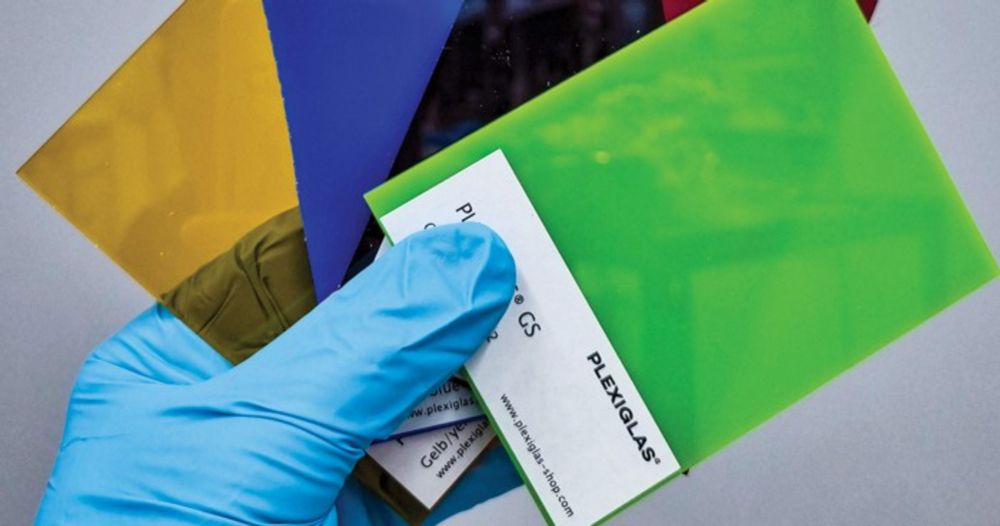
Breaking down Plexiglas with light
Chlorine radicals unmake commercial polymethacrylates under mild conditions
On really sad lab days in grad school, I'd tell my labmates they were going to make a mistake, make a serendipitous discovery, and get a Science paper out of it.
For one chemist, that happened! An accidental discovery of a new way to recycle Plexiglas! 😍
via @bribarbu.bsky.social:
🧪⚗️ #chemsky
20.02.2025 23:51 — 👍 92 🔁 20 💬 2 📌 0
To do this & do it without any apparent input from longtime members (& to serve up an obnoxiously cutesy 404 page on top of it all) is very bad
10.02.2025 12:26 — 👍 24 🔁 6 💬 2 📌 0
I've been wondering when this would happen!
03.12.2024 17:20 — 👍 3 🔁 0 💬 0 📌 0

A version of the kermit vs darth kermit meme where good kermit tells the online academic that they should grade, while darth kermit tells them they should eat more pie.
Every academic right now
29.11.2024 21:58 — 👍 5380 🔁 591 💬 134 📌 112
Such cool work!! Did the Stache lab just solve the plastic crisis?? 😅 can’t wait to see what’s next!
26.11.2024 02:30 — 👍 3 🔁 0 💬 0 📌 0
Tons of great insight about microplastics in this edition of @cenmag.bsky.social but this one I found particularly interesting.
25.11.2024 21:50 — 👍 4 🔁 1 💬 1 📌 0
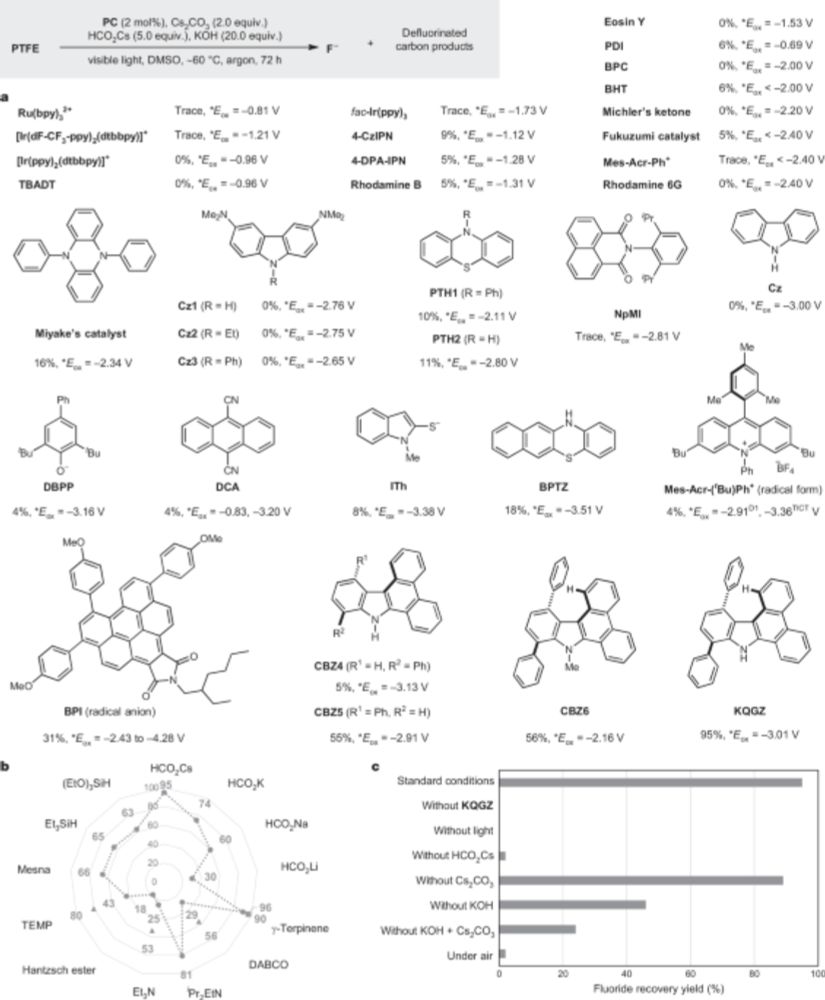
Photocatalytic low-temperature defluorination of PFASs - Nature
Photocatalysis at 40–60 °C is shown to be able to defluorinate perfluoroalkyl substances, known as ‘forever chemicals’, allowing the recycling of fluorine in polyfluoroalkyl and perfluoroalkyl substan...
There are two really cool #PFAS / #foreverchemicals degradation papers out in Nature today
In one, the authors show that powdered Teflon can be transformed into charcoal+fluoride with light+a catalyst+reducing reagent & some very important help from mainly KOH and Cs formate
This is bonkers cool:
20.11.2024 16:22 — 👍 132 🔁 36 💬 2 📌 4
Calling all polymer scientists! Let’s re-find each other as people continue to migrate over!
Please tag people in the comments and share! I’ll continue updating as we find more people. #polymers
go.bsky.app/AgjxzFa
10.11.2024 21:51 — 👍 55 🔁 29 💬 32 📌 1
Professor (Aug 2025) of Polymer and Organic Chemistry at Florida State University. www.kennemurgroup.com
Incoming Assistant Professor of Chemistry at Stony Brook University. Now: AOB Postdoc at MIT in Kiessling Group. Then: PhD at UNC in Leibfarth/Alexanian Groups.
Computational chemist, Professor, Cal Poly SLO. MolSSI Board of Directors. Past Chair ACS COMP.
Principal Research Manager & Project lead @ Microsoft Research AI for Science; AI for materials; Previously @ MIT, DeepMind, Google X. Views my own.
Distinguished Professor of Engineering, Entrepreneur, Mother, and Cancer Survivor. Ohio State University, AIChE Board Member. My thoughts and opinions are my own. go.osu.edu/winterlab
PhD Chemist @ERG. Polymer/Material/Organic/Energetic Scientist.
Chemical Engineering PhD student at CU Boulder Anseth/Bowman groups
Luther College Alumn
Polymer chemistry at ETH Zürich. Student-run account.
polychem.mat.ethz.ch
The Matson Lab at Virginia Tech Dept of Chemistry develops small molecules and materials for biology, medicine, and sustainability using tools from organic, polymer, and supramolecular chemistry.
As a division of @acs.org, ACS Publications is proud to publish the most trusted, most cited, and most read collection of journals in the chemical and related sciences.
Explore ACS Publications: pubs.acs.org
Research, news, and information from the Journal of the American Chemical Society: pubs.acs.org/JACS
🧪 Chemist | 'Ramón y Cajal' Fellow @www.unizar.es @inmadivulga.bsky.social | Former SwagerGroup Postdoc @mitchemistry.bsky.social | Self-assembled materials for soft robotics, optoelectronics & sensing ⚡️
Home to the most innovative and exciting polymer chemistry.
Published by @rsc.org 🌐 Website: rsc.li/polymerchem
Group of Dr. Jean-François Lutz at ISIS, Strasbourg, France. Working on information-containing macromolecules and digital polymers.
A unique forum for the publication of innovative, cutting-edge research on the development of alternative green and sustainable chemistry systems, methods, and technologies.
Published by @rsc.org 🌐 Website: rsc.li/greenchemistry
Flagship journal for @rsc.org, open access with no publication fee, all topics in chemistry. chemicalscience-rsc@rsc.org
Celebrating our 15th year in 2025! 🌐 Website: rsc.li/chemscience
We are interested in olefin metathesis polymerization mechanisms and synthetic nanotubes based on polymeric aramid foldamers.
www.kilbinger.net
Professor of Chemistry at Virginia Tech, interested in organic, macromolecular, and supramolecular chemistry. Secretary of IUPAC Subcommittee on Polymer Terminology; ACS POLY Division Treasurer. Posts are my own.
